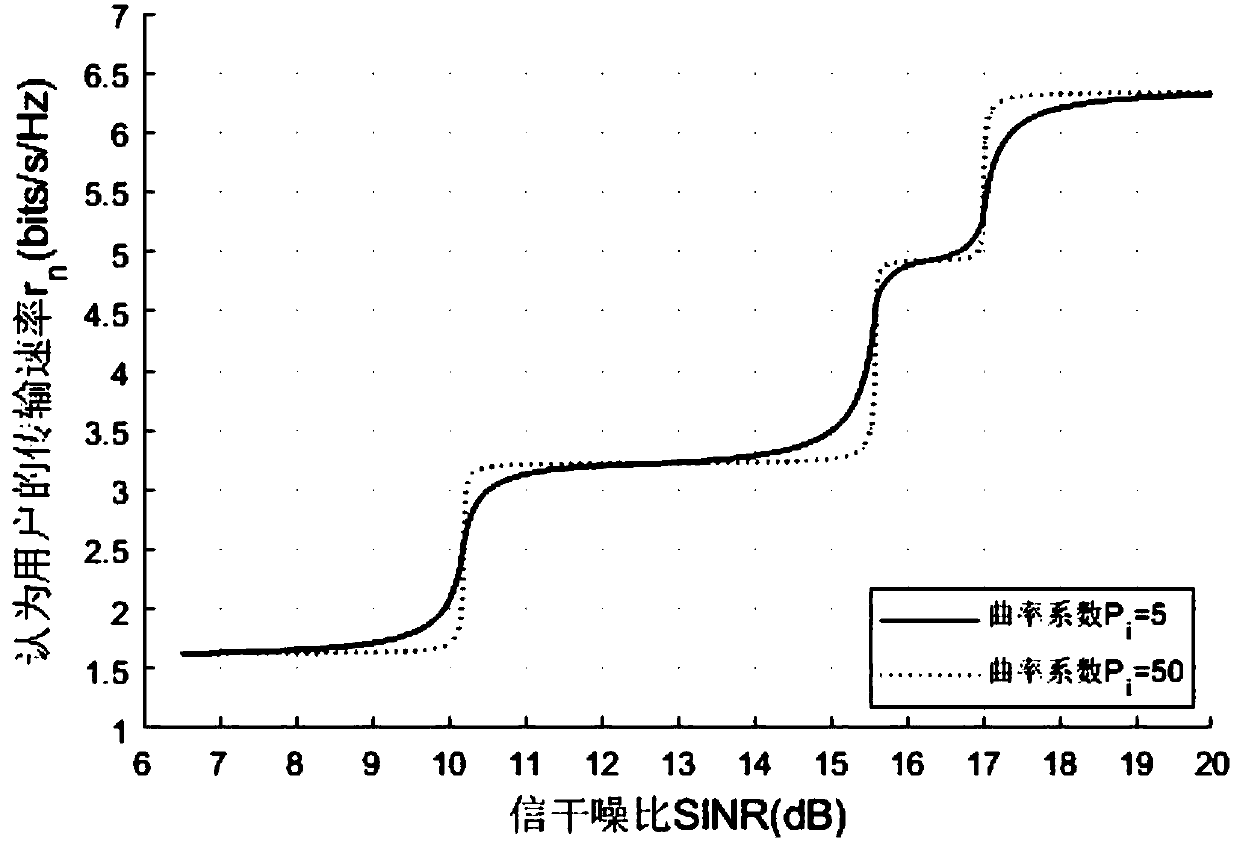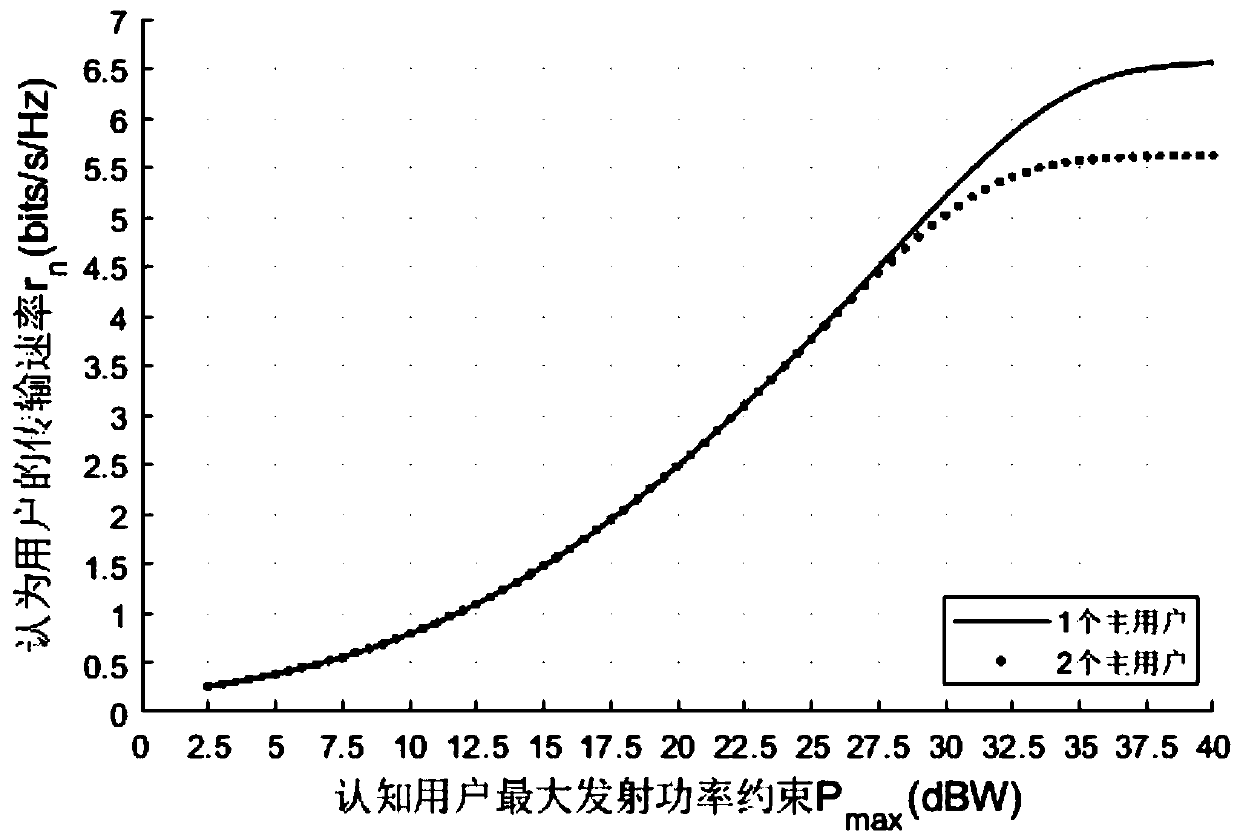A self-adaptive transmission power distribution method for a downlink of an unmanned aerial vehicle base station
An adaptive transmission and downlink technology, applied in radio transmission system, power management, transmission system, etc., can solve problems such as slow transmission rate, high delay, and shortage of spectrum resources
- Summary
- Abstract
- Description
- Claims
- Application Information
AI Technical Summary
Problems solved by technology
Method used
Image
Examples
Embodiment Construction
[0120] figure 1 Given the scenario of one cognitive user and multiple primary users in a single cell of a UAV base station using cognitive OFDM, a system model of spectrum sharing is established. In the figure, the cognitive network base station is located in the center of the cell, and the cognitive users and primary users are randomly distributed in the cell. The solid line represents the communication link, and the dotted line represents the interference link from the cognitive user to the primary user receiver. Assume that the system bandwidth B=5 MHz, and the number of sub-channels N=32. In addition, it is assumed that there are L primary users in the cell, and the starting frequency point of the frequency band occupied by each primary user is randomly generated, the bandwidth is evenly distributed between 2Δf-6Δf, and all primary users have the same interference power threshold The power spectral density of the primary user l signal is assumed to follow the circular fi...
PUM
 Login to View More
Login to View More Abstract
Description
Claims
Application Information
 Login to View More
Login to View More - R&D
- Intellectual Property
- Life Sciences
- Materials
- Tech Scout
- Unparalleled Data Quality
- Higher Quality Content
- 60% Fewer Hallucinations
Browse by: Latest US Patents, China's latest patents, Technical Efficacy Thesaurus, Application Domain, Technology Topic, Popular Technical Reports.
© 2025 PatSnap. All rights reserved.Legal|Privacy policy|Modern Slavery Act Transparency Statement|Sitemap|About US| Contact US: help@patsnap.com



